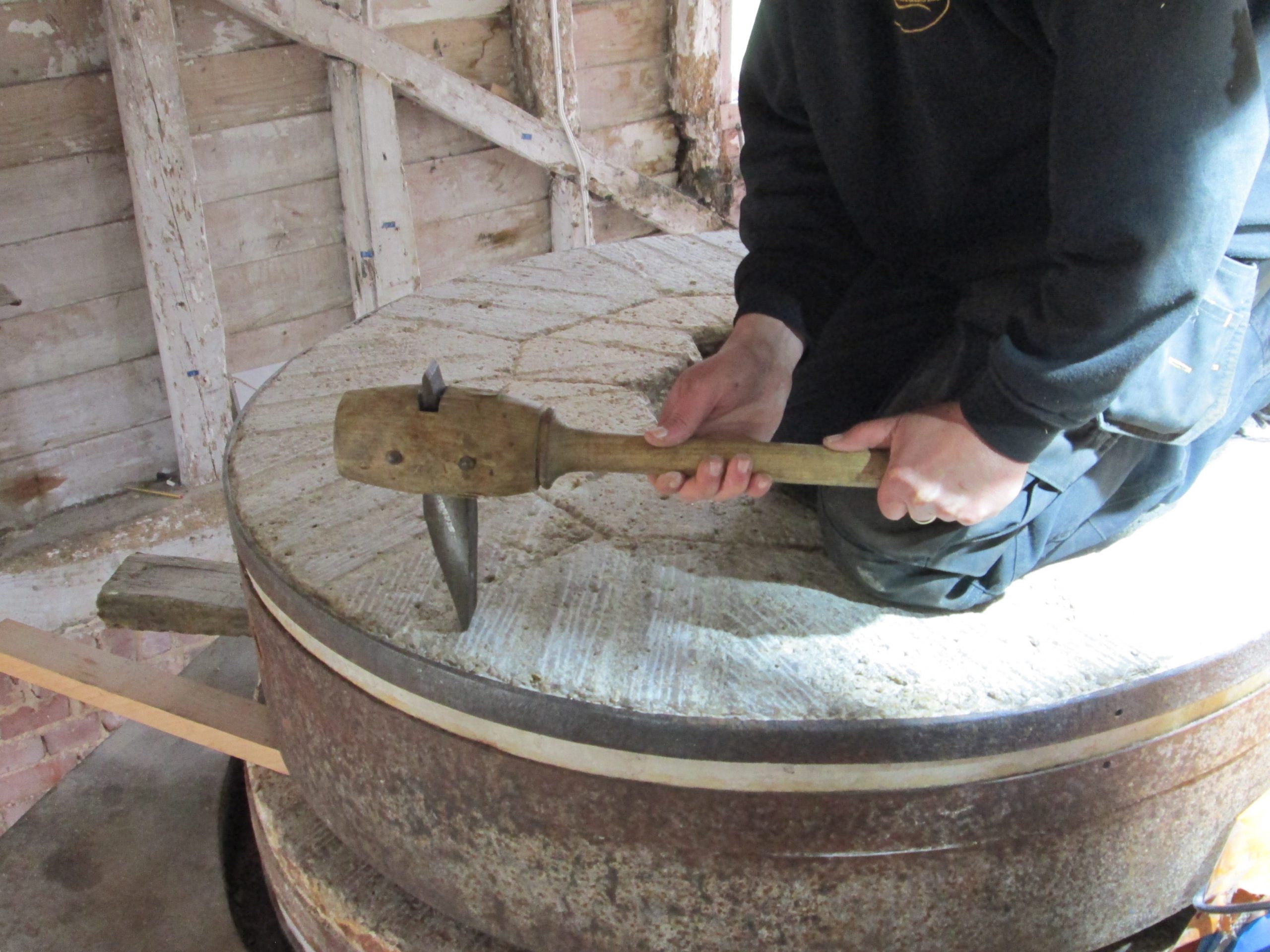News from the Watermill
Alton Watermill is currently being restored and is due to reopen in mid-2022. Collections and Interpretation Manager Lisa Harris updates us on the work that has been taking place and what you can expect to find when the building reopens to the public.
In February 2020, the museum was pleased to be awarded £99,200 by the National Lottery Heritage Fund towards the restoration of Alton Watermill. Dating from at least the late 18th century, the mill, cart lodge and mill house were moved to the museum from Stutton near Holbrook in the early 1970s, to make way for the creation of the Alton Water Reservoir. A film made by Anglia TV of the removal can be found in the British Film Institute archives and is available to watch online.

The mill has been used for demonstrations since then but in more recent years, problems with wet rot in the original axletree led to a series of repairs that were unable to cope. The turning axle regularly began to bounce, lose its wedges and wind itself into the pit wall.
Whilst COVID interrupted our plans initially, work was finally able to start onsite in March 2021. Working with millwrights, Dorothea Restorations, we have installed a new debris grill from the millpond, a new timber cill beam under the cast iron sluice-gate, dressed and made repairs to the furniture of two sets of millstones, repaired some of the steel bucket fixings, fitted a new pentrough and most importantly, replaced the axletree that runs through the mill.
Our new axletree is made from a beautiful piece of English Oak and weighs around 760kg (about the same as a Suffolk horse!). It supports the 5-tonne wheel via a set of new wedges and turns smoothly thanks to two new bronze bearings.
In order for the mill to be run by waterpower, we have carried out works to the millpond that sits behind it. This has now been dredged, repuddled with blue clay and holds water again as it should.
We have started to carry out trials to the working machinery with one of the most exciting days being the first time the water was allowed to gently trickle through the sluice, gather in the buckets and send the wheel turning once again.
The mill has three sets of stones – two of which are operational. The south set will continue to be powered by the waterwheel and we have incorporated a viewing window in the side of the stone furniture (wooden casing) to enable visitors to see the stones turning.
Our western set of stones have a much newer set of furniture around them so are now connected to a motor to give us maximum flexibility for running the mill. This is the set that we plan to use to mill flour for use in onsite food demonstrations and to sell in our shop.
The last few months has seen millwright and carpenter, Bill Griffiths start work on the external timbers of the mill. As this is a historic building we are taking a conservation led approach to keep as much of the old timber as possible. It is always the south-facing side of any building that suffers most and with Alton Watermill that is certainly the case, however, progress can clearly be seen by our team and members who walk past the mill regularly.
Internally our volunteer team are working on repairs to trapdoors, chutes, barriers, adding a new hopper, installing a hand wash sink and creating new interpretation that will enable visitors to understand how the building works. One of our research volunteers has trawled through our mill records to bring the story to life afresh, hunting for details of the people who lived and worked there but we’re always keen to hear from anyone who has information that might add to or confirm what we think we know.
The restoration has been undertaken as part of the museum’s plans to become the Food Museum. You can hear more in our BBC Radio 4 interview as part of “The Museums That Make Us” – here, the video above shows their sound engineer getting audio of the water turning the wheel, which you can hear in the piece.
As the seasons change, we plan to show the whole story from growing the crop, through harvesting and thrashing with traditional machinery, to grinding the wheat into flour as part of our Bread Trail to getting hands-on with the baking and tasting parts of the process too. For details of events coming this season, keep an eye on our website and social media.
We are grateful to all our funders and donors for their support and hope that this will be the start of a new life for the building along with a great experience for our visitors. We are in the process of recruiting and training a team of volunteer millers to help us to bring to life both Alton Watermill and Eastbridge Windpump (restored 2019 and located nearby). The role will include talking with visitors, milling, bagging flour and maintaining both the mill and windpump into the future. If you or anyone you know would like to be involved, please get in touch via Volunteer Suffolk or volunteering@foodmuseum.org.uk
Share this article






